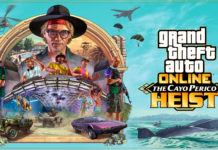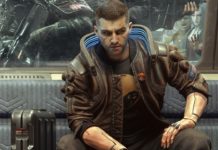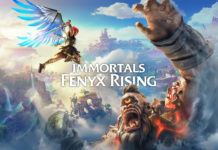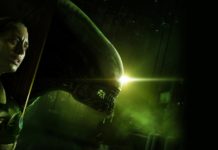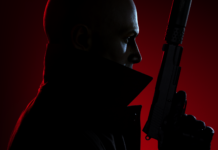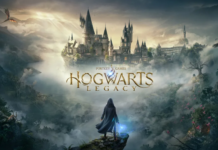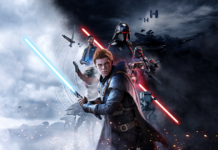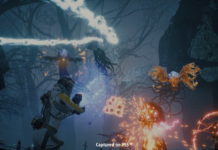Disclaimer: The proceeding article is editorial content. The views expressed are those of the author and do not neccessarily reflect the official position of the Advanced Media Network.
 The wait is over. The moment that gamers worldwide have been anticipating since E3 2004 has finally arrived. The next installment in quite possibly the greatest video game franchise in history is upon us. The Legend of Zelda: Twilight Princess will be in our hands in less than a week’s time.
The wait is over. The moment that gamers worldwide have been anticipating since E3 2004 has finally arrived. The next installment in quite possibly the greatest video game franchise in history is upon us. The Legend of Zelda: Twilight Princess will be in our hands in less than a week’s time.
Wind Waker released to extraordinary critical acclaim. A perfect score from legendary game magazine Famitsu was the crown, a score that had only been bestowed on 3 other games before it. Wind Waker was undeniably a masterpiece, although the series’ move into cel-shaded graphics rubbed some the wrong way. Despite the outcry, Nintendo said that they were planning future Zeldas that would use the same graphic technique. After Wind Waker’s shining moment, Zelda was forgotten for a bit in the public eye.
But not in Nintendo’s. Eiji Aonuma and Shigeru Miyamoto were hard at work on another Zelda game. They knew that this would be a game that would make the Gamecube sing as it entered the end of its lifespan. This would be the game that defined what Nintendo and the Gamecube were capable of, and the answer to all the largest franchise games on other consoles.
E3 2004 rolled around. Whispers circulated about some large announcement in the works. But in the E3 run-up, there are often dozens if not hundreds of rumors about what is coming. Nintendo was silent, as Nintendo is wont to be. Sony and Microsoft machinated, with a few big announcements of their own concerning the PSP and Halo 2.
Nintendo then began their conference. A new face walked onstage and introduced himself thus: “My name is Reggie. I’m about kicking ass, I’m about taking names, and we’re about making games.†This stranger walked us through Nintendo’s new lineup: Metroid Prime 2: Echoes. Baten Kaitos. Paper Mario. He showed us the DS for the first time. He introduced Satoru Iwata to the stage, where Iwata began to divulge the early details of a new project that he called the “Revolution.†We were excited and interested already, and Reggie began to bring the conference to a close. Almost as an afterthought, though, he spoke the following words that would bring gaming to its knees:
“But before you leave, I’d like you to step inside one more world for Nintendo Gamecube.â€
And then Link drew his sword as he rode out of the setting sun.

It was undeniably one of the most explosive gaming announcements in recent memory. Not only was Link coming back for one more adventure, but he had also abandoned the controversial cel-shading art style that was rumored to have become a mainstay of the series. Regardless of how any of us felt about the art style, we knew that Link was coming back, and that a new adventure awaited us.
Zelda has always been a cut above all other games. Even Nintendo’s trademark franchise, Mario, does not command the same universal respect– even reverence– that Zelda does. When Mario Galaxy was revealed, people cheered. When Twilight Princess was revealed, people wept in joy.
Why does Zelda captivate us? What is it about this one franchise that can reduce adults to tears? How has this game lived up to its own name, and become a legend it its own right?
The answer is not as simple as you’d think. One could make a case for nostalgia, and how we anticipate Twilight Princess because of the memories of Zeldas past. But other franchises like Mario are just as old and prolific yet don’t inspire this level of awe. One could argue that the constant level of quality of all Zelda games (CD-I notwithstanding) leads us to expect an amazing gaming experience. To that I counter with franchises like Splinter Cell, each installment of which is of amazing quality, but also does not reach the heights of Zelda.
 We love Zelda because it is a story in which we can be the hero in an epic, all-encompassing adventure. Games can be epic adventures, but whereas in others we have varied protagonists with their own personality nuances, Link is us. Link is aptly named, as he is the connection we have to the game. Silent and skillful, Link is our avatar in this game. He is who we want to be–riding in, heedless of the danger, on a legendary quest to save the world. His are the eyes through which we see Hyrule, and all the stories that its denizens have to tell. It is exhilarating, moving, and uplifting.
We love Zelda because it is a story in which we can be the hero in an epic, all-encompassing adventure. Games can be epic adventures, but whereas in others we have varied protagonists with their own personality nuances, Link is us. Link is aptly named, as he is the connection we have to the game. Silent and skillful, Link is our avatar in this game. He is who we want to be–riding in, heedless of the danger, on a legendary quest to save the world. His are the eyes through which we see Hyrule, and all the stories that its denizens have to tell. It is exhilarating, moving, and uplifting.
The Zelda series also is familiar territory, and not simply because we’ve played other Zeldas before. The themes and idioms of Zelda are ones that are hardwired into us. Who hasn’t heard a story of a hero saving the world against overwhelming odds? Or one of a hero rescuing a princess from the forces of evil? These are stories that define not only our culture, but also cultures around the world. As such, they resonate with us. Although the particulars of the story may be new to us, the core is something we know and are familiar with.
There is also an otherworldly quality to Zelda. It is removed from our experience, yet still lifelike enough to be imagined. For example, we’ve never met a Goron, but we can almost see their role in the world, almost see where they could fit in our world. We’ve heard myths about faeries, magical swords, and monsters. Hyrule as it exists could be our own world, shifted just a bit. It is that fantastical possibility that brings us to the game.
Zelda brings all these qualities together and molds them into an experience that is at once intimate and epic. There is no denying the hold Zelda has on those who play it, and no question as to how highly anticipated this game has been. On November 19th, the wait will be over. We will again be in Hyrule, setting out on another great adventure.
Blades will bleed. Shields will shatter. But as the light fades, will the Hero rise again? Or will darkness reign?
Mike Kelly is a graduate of Colgate University and has been a gamer since birth. He has written for etoychest.org and other gaming sites. More often than not, he can be found in either Boston or Azeroth.

